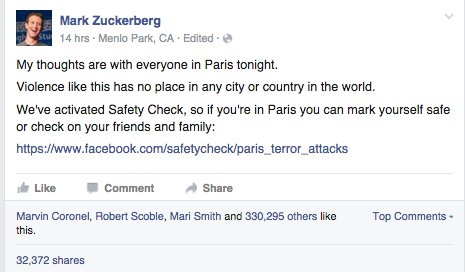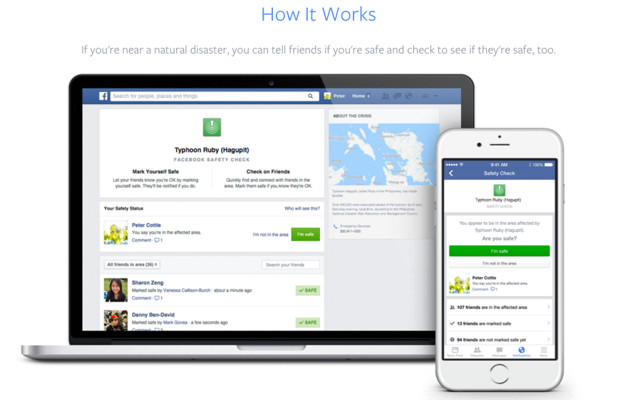A New Use for Facebook’s Safety Check
Just hours after coordinated attacks left at least 127 people dead in Paris, Facebook activated its “Safety Check” feature. This was the first time Safety Check has been used outside of a natural disaster setting.

The feature works like this: Facebook uses geolocation to identify users who live or may be traveling in an area affected by a disaster. The social-media network then sends these users a notification asking about their safety, and encouraging them to “check in” to let friends know that they are safe.
According to Facebook, Safety Check was inspired by the use of social media during the 2011 earthquake and tsunami in Japan. Launched in October 2014, the feature was first activated following the Nepal earthquake in April. It has since been activated in other natural-disaster circumstances, including the earthquake in Chile in September and Hurricane Patricia and the earthquake in Pakistan, both during October.
Recommended: What ISIS Really Wants
Indeed, it seems Facebook’s Safety Check was initially intended for information and status sharing following natural disasters, not terrorist attacks. Facebook’s statement at the launch of Safety Check nebulously identifies the feature as something to be used in times of “disaster”—however, as you can see below, branding of the tool elsewhere is more specific.

Of course, as the Paris attacks prove, Safety Check could be a valuable feature for a broader range of crisis situations moving forward. However, because the feature must be manually activated by Facebook’s “social good” team, there is some level of human discretion involved in deciding when a given disaster merits the activation of the feature.
If the Paris attacks mark an expansion of Safety Check beyond natural disasters, it will be interesting to see how Facebook decides when and where to use it.
Read more from The Atlantic:
M.I.A.'s New Video Is About the Refugee Crisis—and Pop Music's Hypocrisy
ISIS Will Be 'a Serious Threat for Some Time to Come,' Obama Says
This article was originally published on The Atlantic.
